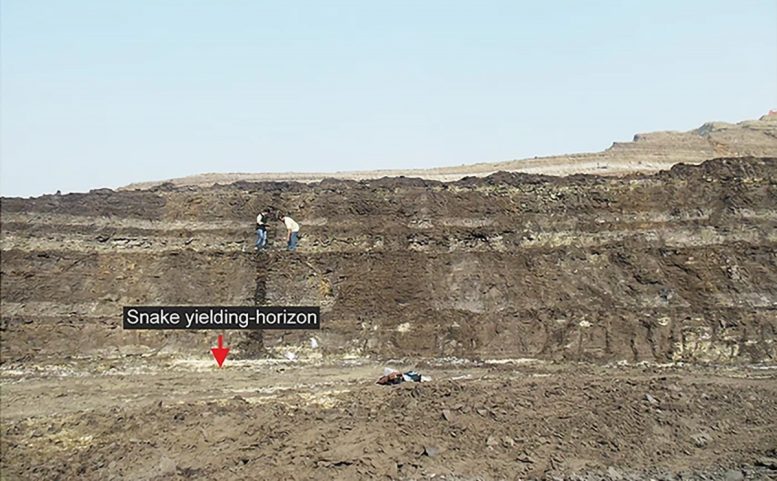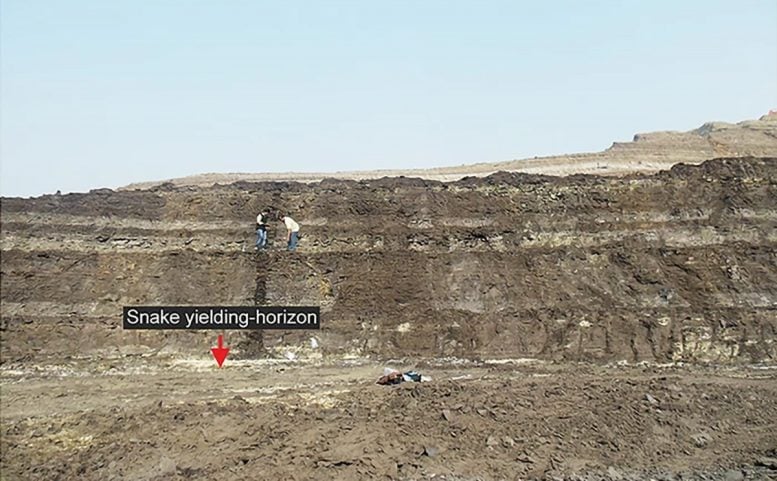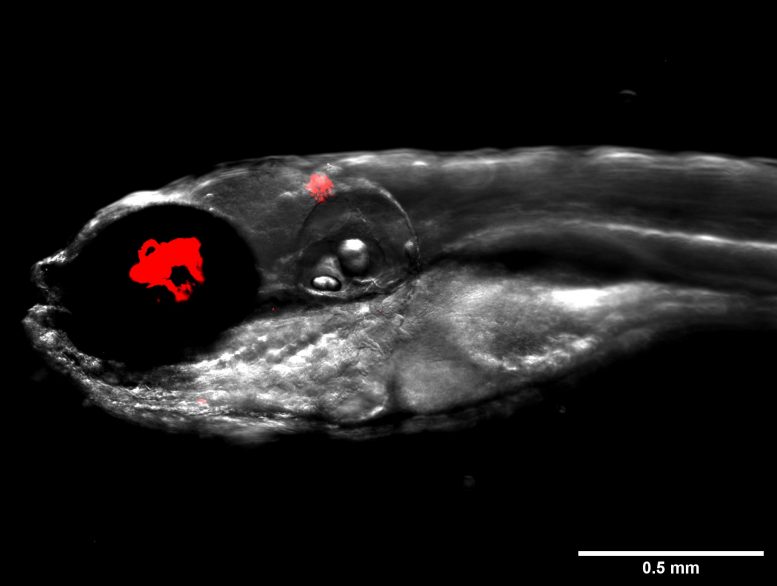

Researchers have discovered a new ancient snake species, Vasuki Indicus, in Gujarat, India, which may have been one of the largest snakes ever, reaching up to 15 meters in length and dating back 47 million years. Credit: Scientific Reports (2024). DOI: 10.1038/s41598-024-58377-0
New research published in Scientific Reports suggests that a recently identified ancient snake species, named Vasuki Indicus, may have been among the largest snakes ever. This species, which existed approximately 47 million years ago in Gujarat, India, reached lengths of 11 to 15 meters (36 – 49 feet). Belonging to the now-extinct madtsoiidae family, Vasuki Indicus represents a unique lineage that originated in India.
Debajit Datta and Sunil Bajpai describe a new specimen recovered from the Panandhro Lignite Mine, Kutch, Gujarat State, India, which dates to the Middle Eocene period, approximately 47 million years ago. The new species is named Vasuki Indicus after the mythical snake round the neck of the Hindu deity Shiva and in reference to its country of discovery, India. The authors describe 27 mostly well-preserved vertebra, some of which are articulated, which appear to be from a fully-grown animal.
Size Estimation and Ecological Role
The vertebrae measure between 37.5 and 62.7 millimeters in length and 62.4 and 111.4 millimeters in width, suggesting a broad, cylindrical body. Extrapolating from this, the authors estimate that V. Indicus may have reached between 10.9 and 15.2 meters in length. This is comparable in size to the longest known snake to have ever lived, the extinct Titanoboa, although the authors highlight the uncertainty around these estimates. They further speculate that V. Indicus’s large size made it a slow-moving, ambush predator akin to an anaconda.
The authors identify V. Indicus as belonging to the madtsoiidae family, which existed for around 100 million years from the Late Cretaceous to the Late Pleistocene and lived in a broad geographical range including Africa, Europe, and India. They suggest that V. Indicus represents a lineage of large madtsoiids that originated in the Indian subcontinent and spread via southern Europe to Africa during the Eocene, approximately 56 to 34 million years ago.
Reference: “Largest known madtsoiid snake from warm Eocene period of India suggests intercontinental Gondwana dispersal” by Debajit Datta, and Sunil Bajpai, 18 April 2024, Scientific Reports.
DOI: 10.1038/s41598-024-58377-0

